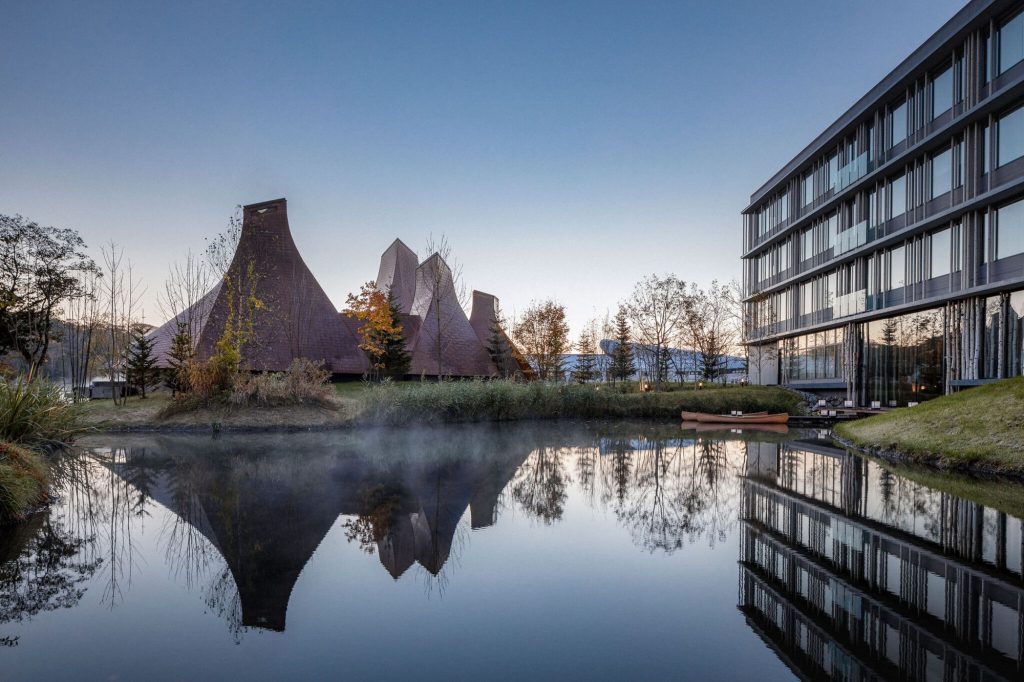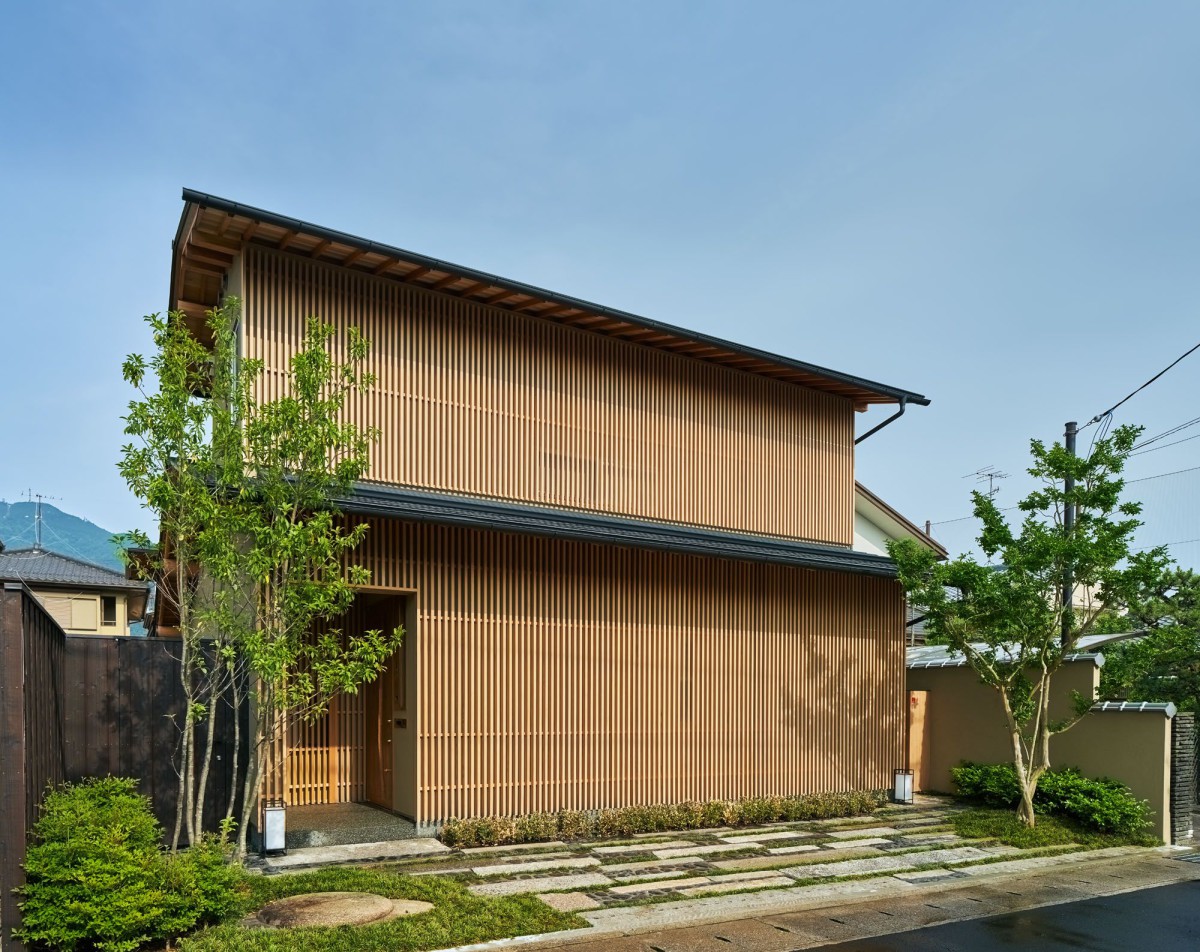
The bathhouse of “Sankaku-no-Yu” (triangular bath) was inspired by Kucha, the Ainu’s temporary hut used to bivouac when hunting for bears or waiting for salmon in the mountains, and has a quiet presence that nestles close to the surroundings without intruding on the beautiful nature. Kucha’s structure is referred to as Ketunni, a tripod structure made of three logs that are connected on the sides. Its distinctive feature is the inverted triangular pyramid apex with the end of the logs protruding out, which serves as a smoke exhaust and skylight. By turning this into a design element, the hot spring facility with limited windows became an ecological structure with a gentle and uniform shower of natural light as well as natural exhaust of warm humid air by updraft. When viewed from the guestrooms, the cone-shaped huts blowing smoke from the apex become part of the scenery without disturbing the horizon of the lake. Continue reading Hiroshi Nakamura & NAP




.jpg)
